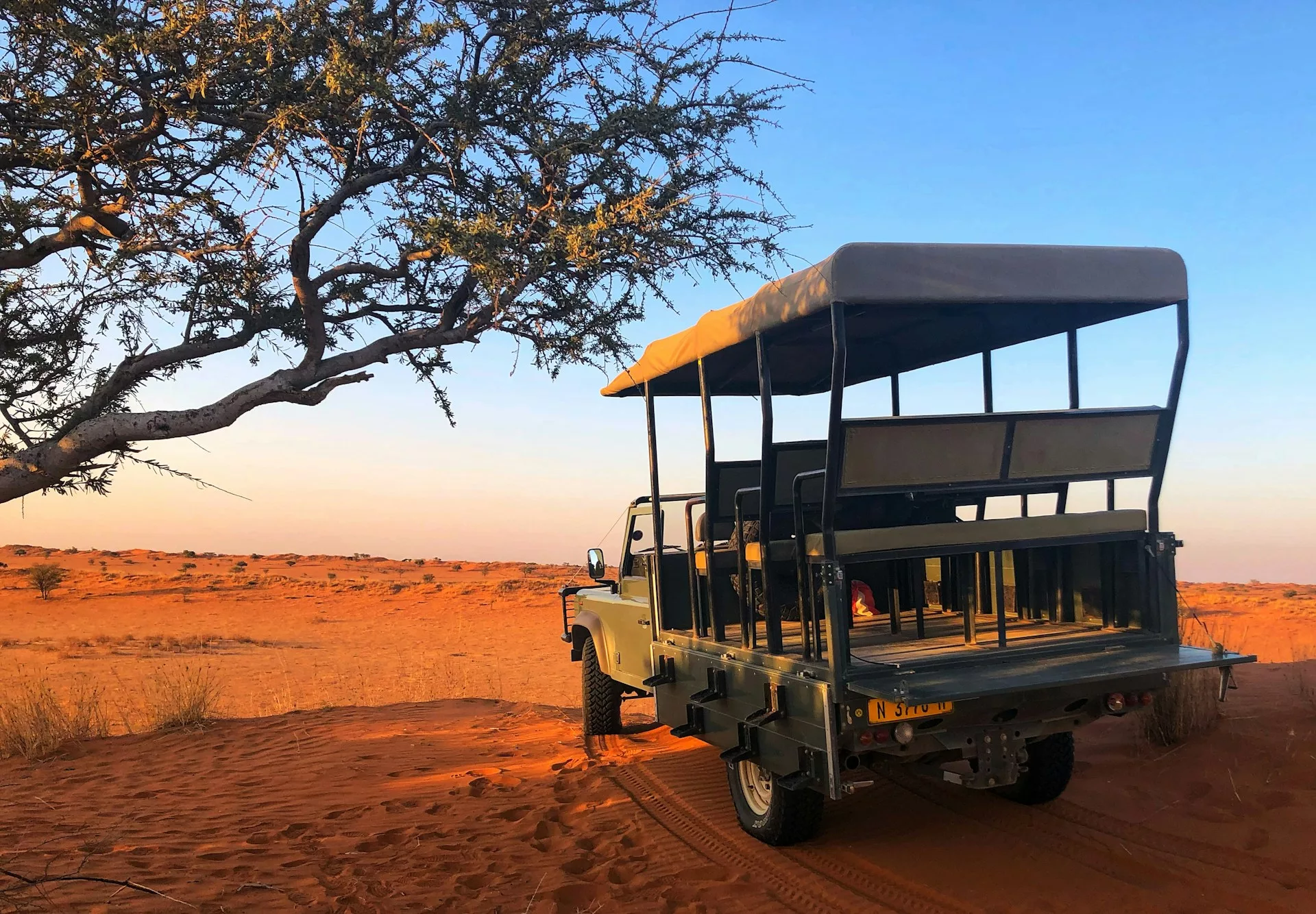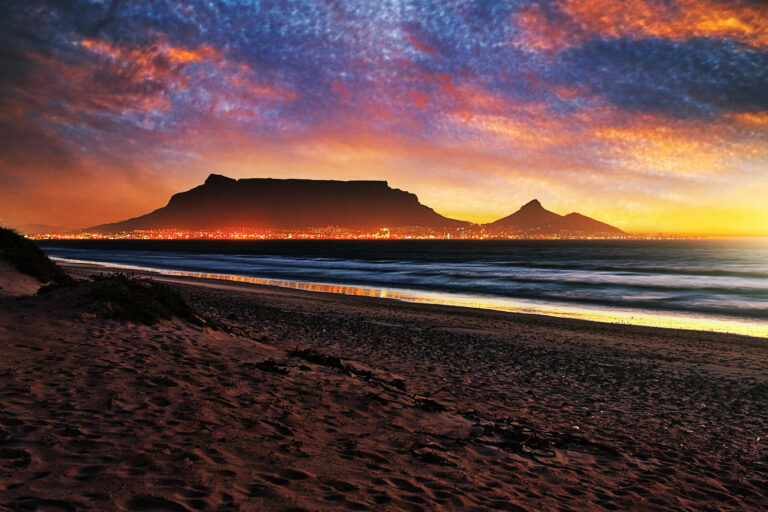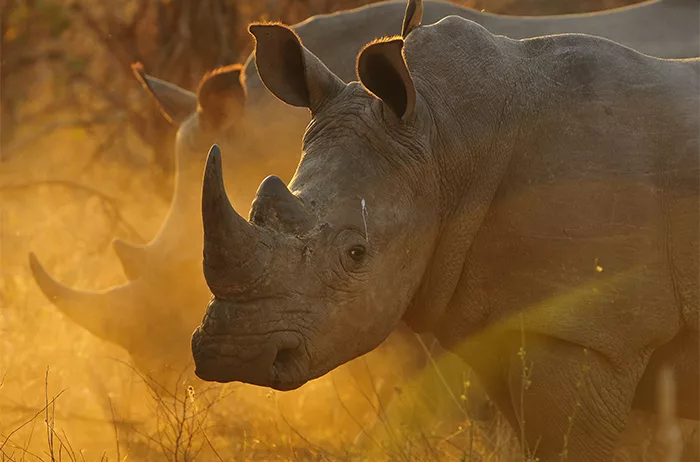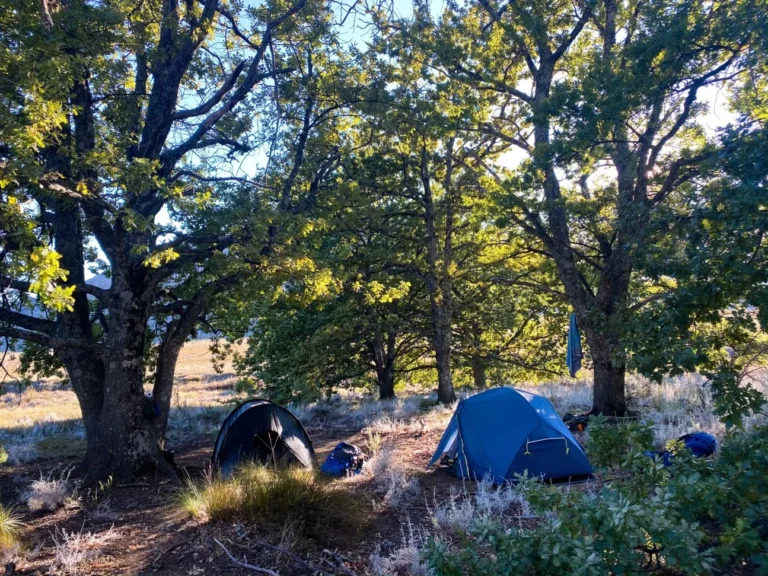Where chill air meets golden dunes
Most people imagine the Kalahari as a furnace—searing sun, wide blue skies, and landscapes that shimmer in the heat. But in winter, everything shifts.

Safari jeep at sunset in the Kalahari Desert in Namibia/Bernd Dittrich/Unsplash
While winter in South Africa typically calls to mind mountain escapes and winelands fireplaces, the Kalahari offers a different kind of retreat—one rooted in vastness, silence, and a deep sense of place.
A Desert that’s not a desert
Technically, the Kalahari isn’t a true desert—it receives more rainfall than you’d expect. Instead, it’s a semi-arid savanna, and in winter it takes on a distinctive palette: coppery soil, dry golden grass, and the inky outlines of camelthorn trees.
This seasonal shift brings visual drama. With no summer thunderclouds or green flush, the landscape strips back to its essentials. Footprints in the sand tell fresh stories each morning—meerkats emerging from burrows, lions crossing dunes, or gemsbok tracing ancient trails between salt pans.
Wildlife viewing at its best

Kgalagadi/Chris Stenger/Unsplash
Winter is peak safari season in the Kalahari. Cooler temperatures mean more daytime movement from wildlife, and with vegetation sparse, sightings are easier. At places like Kgalagadi Transfrontier Park, you might spot lions lounging on the road, cheetahs scanning the dunes, or jackals trotting through the grasslands.
For a quieter experience, head to Kalahari Trails Nature Reserve—where you can track on foot with guides—or go ultra-luxury at Tswalu Kalahari, South Africa’s largest private game reserve. Winter also brings an explosion of stargazing opportunities, thanks to cloudless skies and low humidity.
Fireside nights and morning silence
There’s nothing quite like waking up in the Kalahari in July. The air bites at your nose, breath hangs like mist, and the first rays of sunlight spill across a frost-dusted landscape. Then come the warm days—perfect for game drives, walking safaris, or just sitting quietly with a cup of rooibos while sandgrouse call in the distance.
At night, the Kalahari comes alive in another way. Lodges light fires, share stories, and serve warming stews and potbrood. On the other end, while wildlife is present year-round, the dry winter months of July and August offer prime viewing, as animals are drawn to the scarce waterholes scattered across the arid landscape.
ALSO READ: Beauty in Barrydale and the art of everything
Cultural encounters with the San

Image of San people in Botswana used for illustrative purposes/Mopane Game Safaris/Wikimedia Commons
The Kalahari is also home to some of Southern Africa’s oldest cultures. Winter is a wonderful time to learn from San communities, whose knowledge of the land is unmatched. In places like !Xaus Lodge (a community-owned lodge in the Kgalagadi), you can experience guided walks with San trackers and hear firsthand stories of survival, heritage, and connection to nature.
These interactions are more than a tourism tick-box—they’re a chance to engage with a worldview that sees the land as a living being, not just a backdrop.
What to pack, what to expect
- Dust-Friendly Clothing: The Kalahari is sandy and windy. Bring durable clothes you won’t mind getting dusty—leave the fashion favourites at home.
- Dress in Layers: Expect hot days and chilly nights (especially June–August). Think light clothes for day, warm layers for evening.
- Daypack Must-Haves: Water bottle, sunscreen, hat, sunglasses, camera, torch or headlamp, and a small first aid kit.
- Shoes: Comfortable, sturdy footwear for walking on uneven terrain.
- Toiletries & Extras: Sunscreen, lip balm, insect repellent, after-sun lotion, shampoo/soap, and enough personal supplies to last your stay.
- Tech & Gear: Camera, spare batteries, memory cards, chargers, adapter plug (SA: 220V), and binoculars for game viewing.
- Handy Add-ons: A good book, notebook and pen, pocketknife (optional), cash for small camp purchases, and copies of important documents like your passport and insurance.
Pair it with a road trip
If you’re heading to the Kalahari from Gauteng or the Cape, consider building in stops along the Green Kalahari (Upington, Augrabies Falls) or tracking the edge of Namaqualand as it nears bloom season. These combinations make for beautiful contrasts: desert stillness, roaring waterfalls, and—if you time it right—a floral explosion.
Follow us on social media for more travel news, inspiration, and guides. You can also tag us to be featured.
TikTok | Instagram | Facebook | Twitter
ALSO READ: Whale watcher’s trail: Where to spot the giants this winter
Moving to Kenya Watch this







